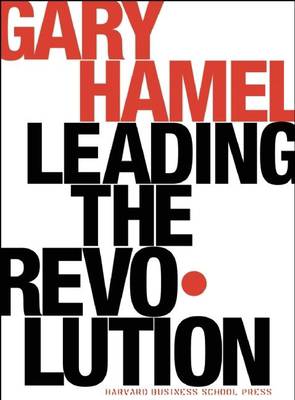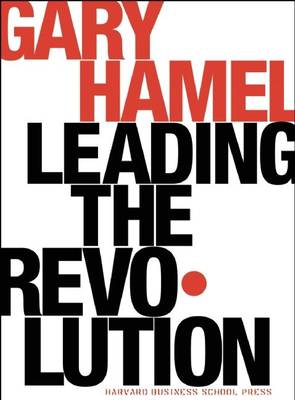
- Afhalen na 1 uur in een winkel met voorraad
- Gratis thuislevering in België vanaf € 30
- Ruim aanbod met 7 miljoen producten
- Afhalen na 1 uur in een winkel met voorraad
- Gratis thuislevering in België vanaf € 30
- Ruim aanbod met 7 miljoen producten
Zoeken
Leading the Revolution
How to Thrive in Turbulent Times by Making Innovation a Way of Life
Gary Hamel
Hardcover | Engels
€ 55,95
+ 111 punten
Uitvoering
Omschrijving
Gary Hamel, world-renowned business thinker and coauthor of Competing for the Future, the book that set the management agenda for the 1990s, now delivers an agenda for the twenty-first century with the national bestseller, Leading the Revolution. Fully revised with a new introduction, this book provides an action plan for any company or individual intent on becoming and staying an industry revolutionary. Hamel argues that to thrive in the age of revolution, companies must adopt a radical new innovation agenda. The fundamental challenge companies face is reinventing themselves and their industries not just in times of crisis--but continually. Beautifully illustrated with more than 100 full-color photos and drawings, Hamel's Leading the Revolution is an action plan (indeed, an incendiary device) for any company or individual intent on becoming and staying an industry revolutionary. Based on experiences of world-class companies, including Charles Schwab, Cisco, Virgin, and GE Capital, Leading the Revolution explains the underlying principles of radical innovation, explores where revolutionary new business concepts come from, and identifies the key design criteria for building companies that are activist friendly. It will show companies how to avoid becoming "one-vision wonders"; harness the imagination of every employee; develop new financial measures that focus on creating new wealth; and create vibrant internal markets for ideas, capital, and talent. Drawing on the examples of activists who profoundly changed their companies with their bare hearts, Hamel outlines the practical steps anyone can take to lead a successful revolution in their own firm.
Specificaties
Betrokkenen
- Auteur(s):
- Uitgeverij:
Inhoud
- Aantal bladzijden:
- 352
- Taal:
- Engels
Eigenschappen
- Productcode (EAN):
- 9781591391463
- Verschijningsdatum:
- 1/01/2003
- Uitvoering:
- Hardcover
- Formaat:
- Genaaid
- Afmetingen:
- 168 mm x 239 mm
- Gewicht:
- 680 g

Alleen bij Standaard Boekhandel
+ 111 punten op je klantenkaart van Standaard Boekhandel
Beoordelingen
We publiceren alleen reviews die voldoen aan de voorwaarden voor reviews. Bekijk onze voorwaarden voor reviews.








